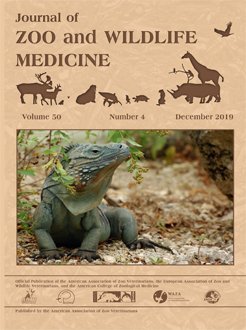Antioxidants have a crucial role in protecting the body from oxidative stress, which would otherwise result in cellular damage and possibly predispose animals to disease. The antioxidant capacity of koalas (Phascolarctos cinereus) and its association with health or disease status is currently unknown. Ascorbate, a dietary antioxidant, has previously been identified in a few eucalypt species eaten by koalas. This study aimed to determine 1) differences between the antioxidant capacity of healthy and diseased koalas, and 2) concentration of the antioxidant ascorbate in Eucalyptus spp. leaves eaten by koalas. To determine differences in antioxidant capacity of koalas, plasma samples from clinically healthy koalas in Kangaroo Island, South Australia (SA) (n = 23), euthanized koalas with oxalate nephrosis from Mount Lofty Ranges, SA (n = 11), and euthanized koalas with chlamydiosis from Moggill, Queensland (n = 11) were analyzed for the three antioxidants α-tocopherol, ascorbate, and retinol and for two measures of antioxidant capacity, ferric reducing ability of plasma (FRAP), and trolox equivalent antioxidant capacity (TEAC). The thiobarbituric acid reactive substance (TBARS) measured formation of oxidants, and an oxidative stress index (OSI) was calculated by TBARS/(TEAC + FRAP). Ascorbate concentration was measured in dietary eucalypt leaves from Mount Lofty Ranges and Moggill. Results showed that in diseased Mount Lofty Ranges and Moggill koalas, plasma α-tocopherol concentrations were significantly lower, and ascorbate, TBARS, and OSI was significantly higher compared with clinically healthy koalas from Kangaroo Island. Ascorbate was high in eucalypt leaves, particularly young leaves from the Mount Lofty Ranges. This study showed that disease was associated with some measures of poor antioxidant capacity in koalas and also found that ascorbate is high in the dietary eucalypts of koalas.
How to translate text using browser tools
9 January 2020
CHANGES IN ANTIOXIDANT CAPACITY OF KOALAS (PHASCOLARCTOS CINEREUS) BASED ON HEALTH STATUS AND MEASUREMENT OF THE ANTIOXIDANT ASCORBATE IN EUCALYPT LEAVES
Leoné M. Immelman,
Natasha Speight
ACCESS THE FULL ARTICLE
antioxidant
diet
disease
eucalypt
oxidation
Phascolarctos





